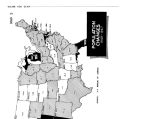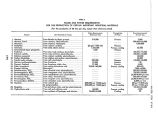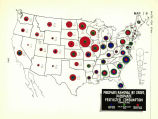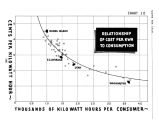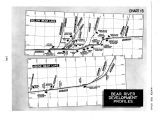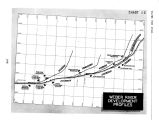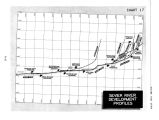| OCR Text |
Show WATER FOR UTAH WATER FOR UTAH INTRODUCTION AND SUMMARY WATER IS THE KEYSTONE TO UTAH'S Since 1847, when the Mormon people first began the settlement of Utah, water has been the controlling influence in the destiny of the State. The early pioneers realized this when, by crude and inefficient means but with sober enterprise, they brought water to arid desert wastes, and from these wrought acres of bountiful land and crops. Today, even more than one hundred years ago, modern Utah knows that adequate water supplies are basic to its economy and well- being; that the availability of water is the limiting factor upon the growth of its agriculture, its industry, its communities, and hence upon the development of opportunities for its growing population. Employment in Utah, as elsewhere, is the measure of a people's security and of a State's wealth. Today, agriculture furnishes gainful employment to almost a quarter1 of the State's 239,000 workers, with mining, manufacturing and construction representing a little less than another quarter. Manufacturing employment has grown steadily because of increasing processing of agricultural and mineral products. However, further expansion of these opportunities within the State is directly tied to its water and power supplies. Industries to utilize the resources of Utah can establish plants only if they are assured of adequate sources of water and power. Agriculture, in the face of an urgent demand for its expansion, must be provided with additional water for new acres as well as for existing acres insufficiently supplied at present. Most of the major communities in the State must find ways to increase their water supplies to meet rapidly growing domestic consumption. The State is large- over 82,000 square miles - but the area which supports most of its popula- ECONOMY tion is a strip of irrigated land in the Bonneville Basin along the western slopes of the Wasatch Range. Westward is an area of desert land extending for almost half of the total area of the State. Here its precipitation is scant. To the east and south of the Uintah Range, which parallels the Utah- Wyoming line directly to the east of Salt Lake City, is a great dissected area through which, in deep canyons, flows the Colorado River and its principal tributary, the Green. This area also receives very little precipitation. ( See Maps I, 2, 3, A- showing patterns of precipitation, population, agricultural land use and location of farms- page 2.) It is the mountainous slopes and peaks of the Bear River, Wasatch and Uintah Ranges- rising to more than 13,000 feet- which capture the greater part of the State's average annual 111/ 2 inches of rain and snow and upon which Utah has depended largely for its water supply. Yet, if Utah were to limit itself directly and solely upon the runoff provided by rain and melting snows at these higher elevations during late spring and summer months, the State's entire economy would decline, or at best, stagnate. Therefore, Utah must not only husband these sources of life- giving water but must also supplement them by large- scale diversions into the Bonneville Basin, principally from the drainages of the Colorado and the Green Rivers. ( See Frontspiece - State of Utah) With the large- scale development of additional water supplies, Utah can face the future with continued confidence that if will furnish its own people with the opportunities they must have and that it will provide its full share in the development of the West and the Nation. |















